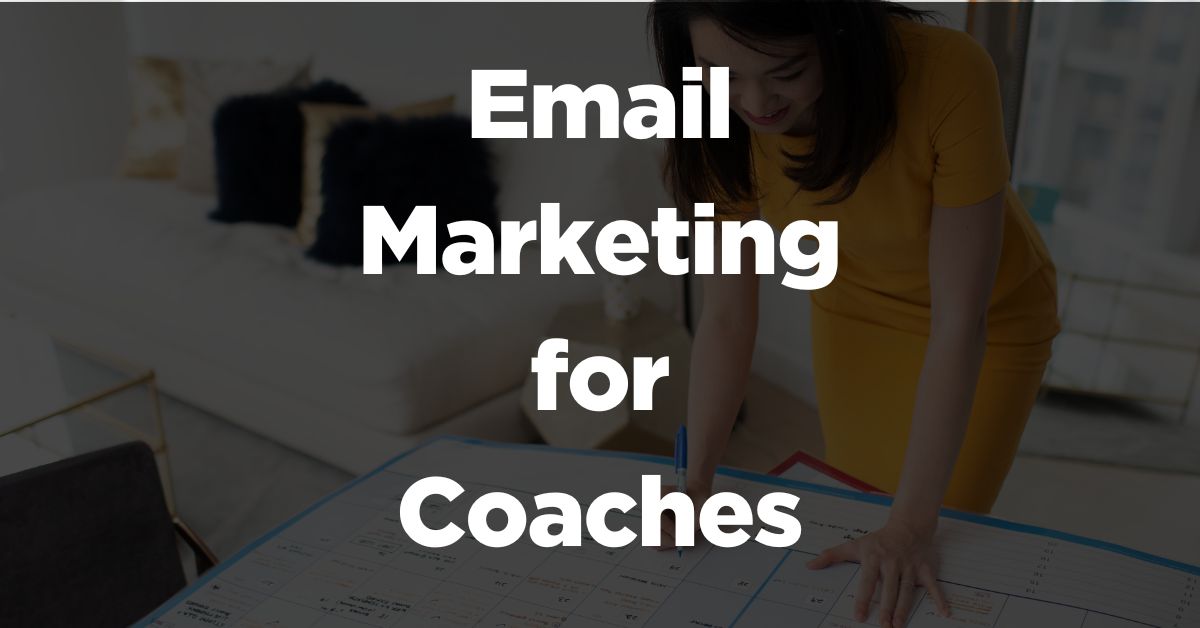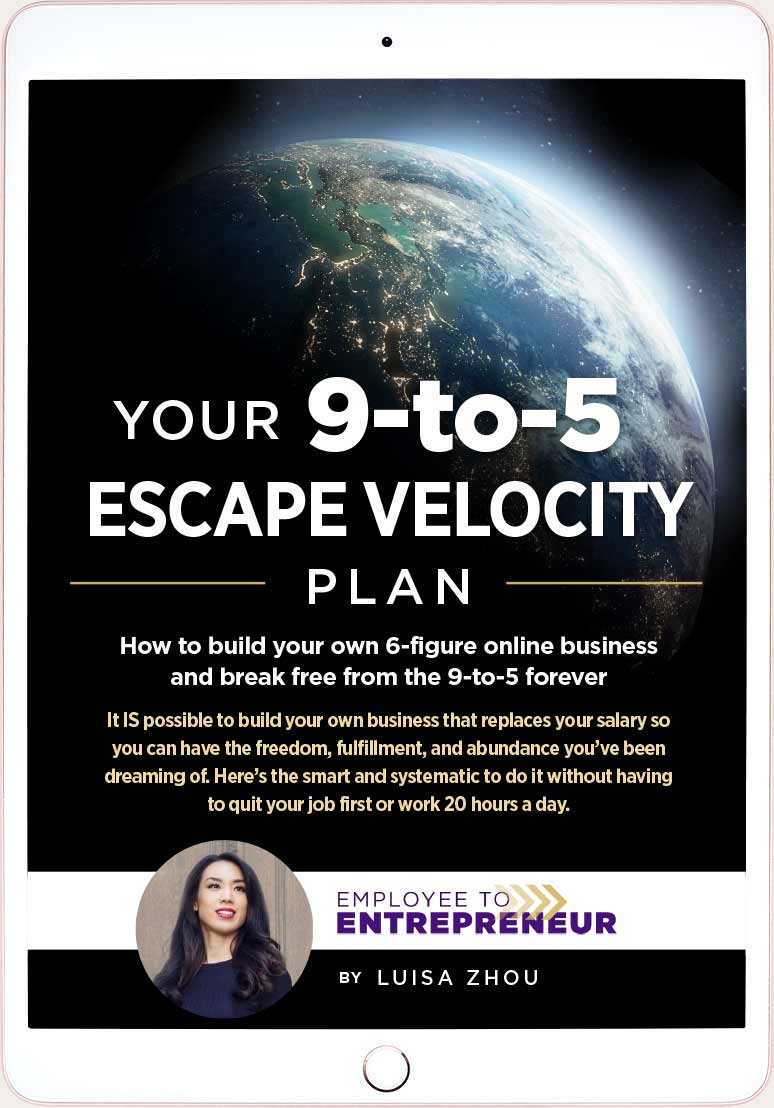Let me know if this sounds right: You’re a coach who’s ready to skip the strategies that don’t work and learn how to use email marketing correctly.
If so, you’ve come to the right place.
Whether you’re a new coach or have years of experience, email marketing can help you do things like:
- Increase leads and sales
- Build relationships – even WITHOUT social media
- Futureproof your business
Specifically, here are a few things you’ll learn:
- 10 email marketing strategies
- The best email marketing tools
- An example of a high-converting email
- An email template you can use
Let’s dive in!
Why should you use email marketing in your coaching business?
Okay, before we go into HOW you can use email marketing as a coach, let’s talk about why email can be so valuable.
Here are a few stats that speak for themselves:
- For every $1 spent, email marketing generates $42
- 99% of email users check their inbox daily
- If they had to pick one, 4 out of 5 marketers would choose email over social media as their preferred way to reach customers
Basically, email is a powerful tool for coaching businesses. But why is that, exactly?
One key reason:
When people join your email list, it means they WANT to hear from you – they trust you.
And by offering value through every email you send, you can foster a relationship with your audience at scale that will make it much more likely that they’ll eventually buy from you.
Contrast that with your audience on social media. On social media, the platform you use owns your audience. If they decide to change their algorithm or your account gets hacked, you lose your following.
But you own your email list – you decide when and how you reach your audience. And that’s why you need an email list.
Get the Ultimate Guide
for building a
6-Figure Coaching Business so you can achieve more freedom!
Steps to use email marketing successfully in your coaching business
How do you use your email list, though?
Here are the top ways to succeed using email marketing – from building your list to selling to your audience.
List building
To be able to reach people through email, the first step is to build a list.
How?
You have plenty of different options. For example, you could add an opt-in at the end of a value-packed guest post, and on your social media bios.
Or, you can include it on your website and in your own blog posts. In that case, you’ll build website traffic to your site so that people see your opt-in and sign up for your email list.
A few ways to drive traffic to your website is to get traffic from search engines (SEO), ads, or social media.
Here’s what my own Instagram bio looks like:
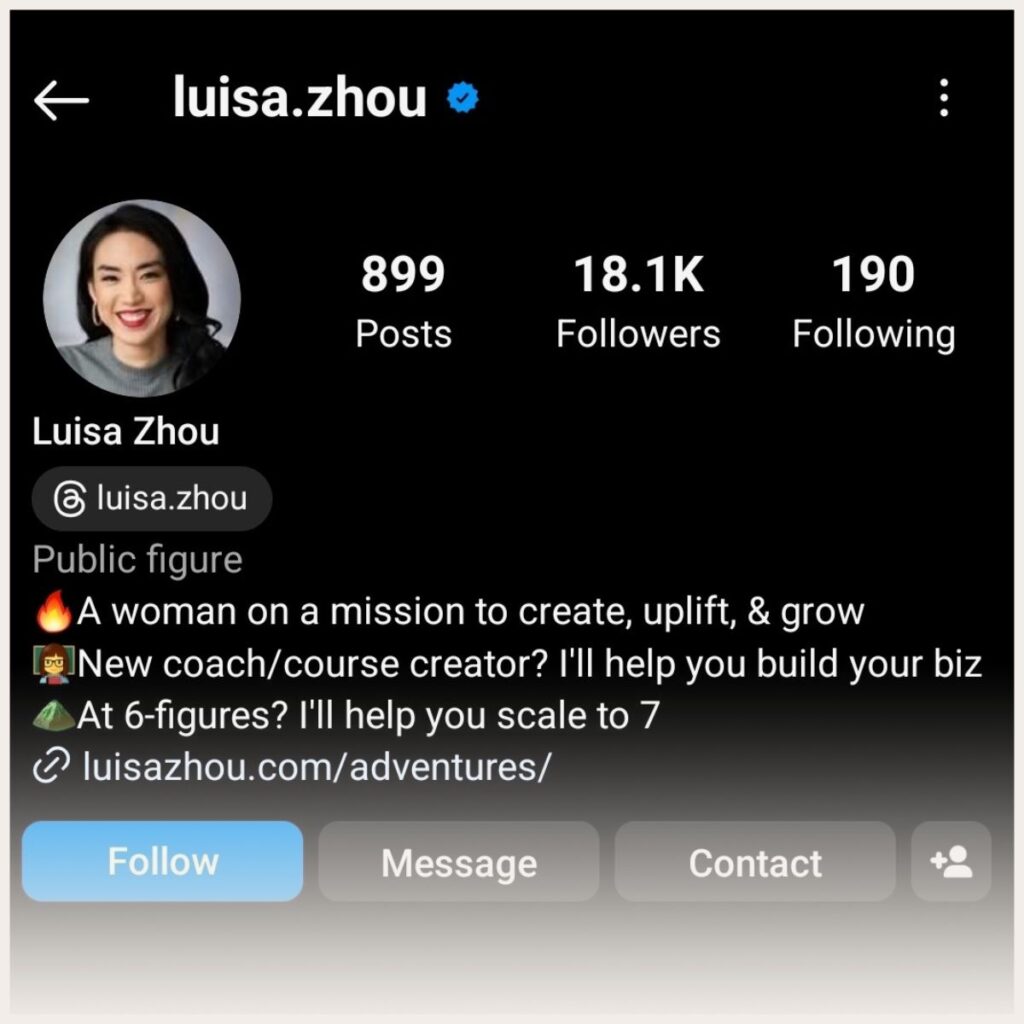
As you can see, I talk about who I help and HOW I help them.
So, the people who sign up for my email list are people who are attracted by my offer because they have pain points I can solve.
And because of that, they’re much more likely to eventually buy from me.
So, here’s a key point to keep in mind…
If you offer value, people will WANT to be on your list.
You won’t have to convince them of what a great coach you are or how amazing your offer is. They’ll see it. And they’ll want to be a part of your audience.
Okay, but how can you offer value? Let’s talk about it.
Lead magnet
To get people interested in your coaching, you want to show that you can give them the results they’re after. And that’s where your lead magnet comes in.
Basically, a lead magnet is a value-packed, free offer to help incentivize email sign-ups.
So, you could choose all kinds of things as your lead magnet, like:
- A quick guide to solving X problem
- Printables
- Free tools
- A masterclass
I typically recommend people to create a simple PDF (such as a 5-step strategy to a goal your audience wants to achieve).
The idea here is to make it a no-brainer for people to want to sign up to get emails from you regularly. Why? Because what you offer is so valuable.
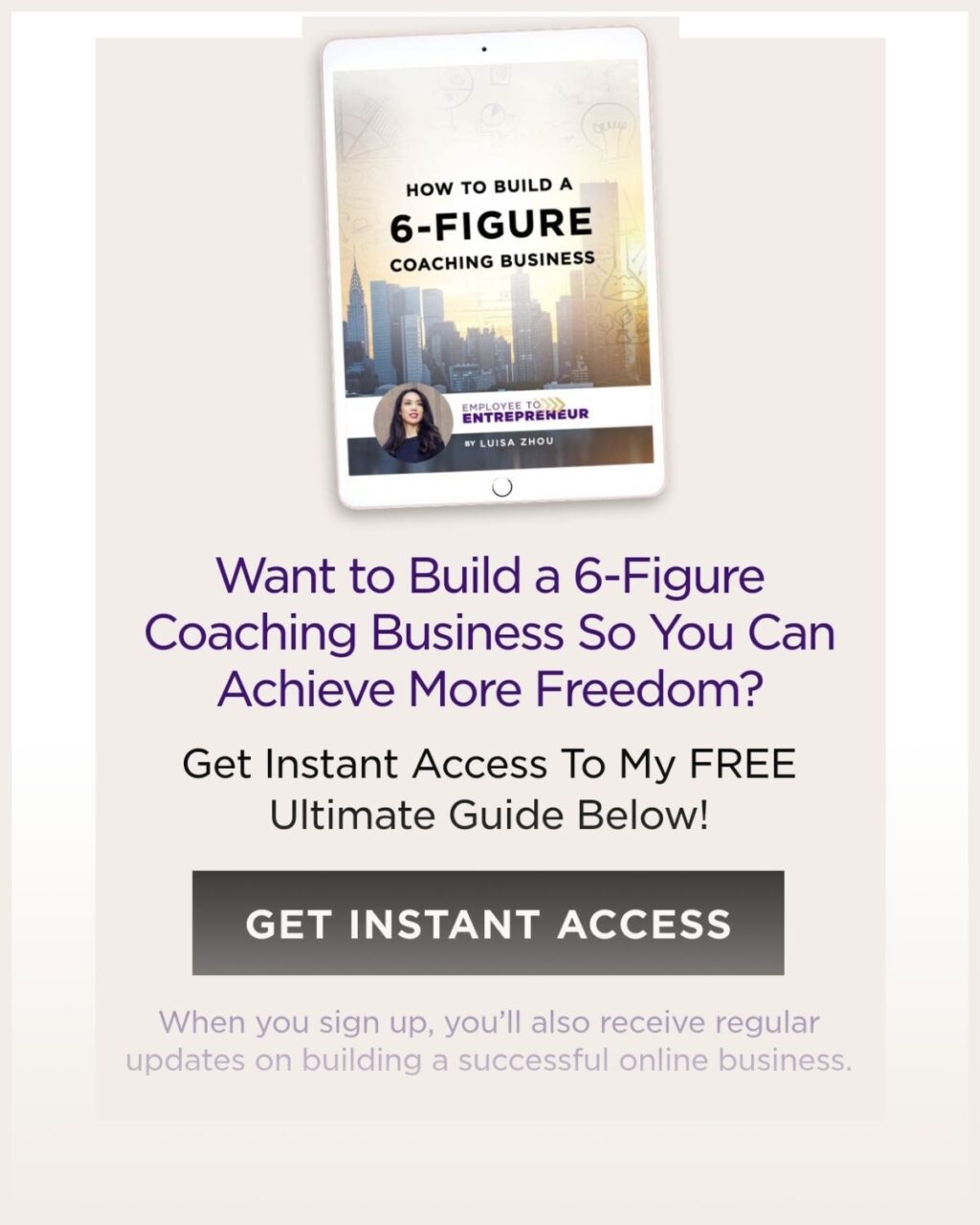
How do you offer the lead magnet and get people to sign up, though?
With an opt-in form (which we’ll look at next). People give their name and email and then receive the lead magnet in their inboxes.
But how do you create an opt-in form? Let’s take a look.
Opt-in forms
Basically, an opt-in is a form that gets people to take action.
It’s the form they use to get your lead magnet.
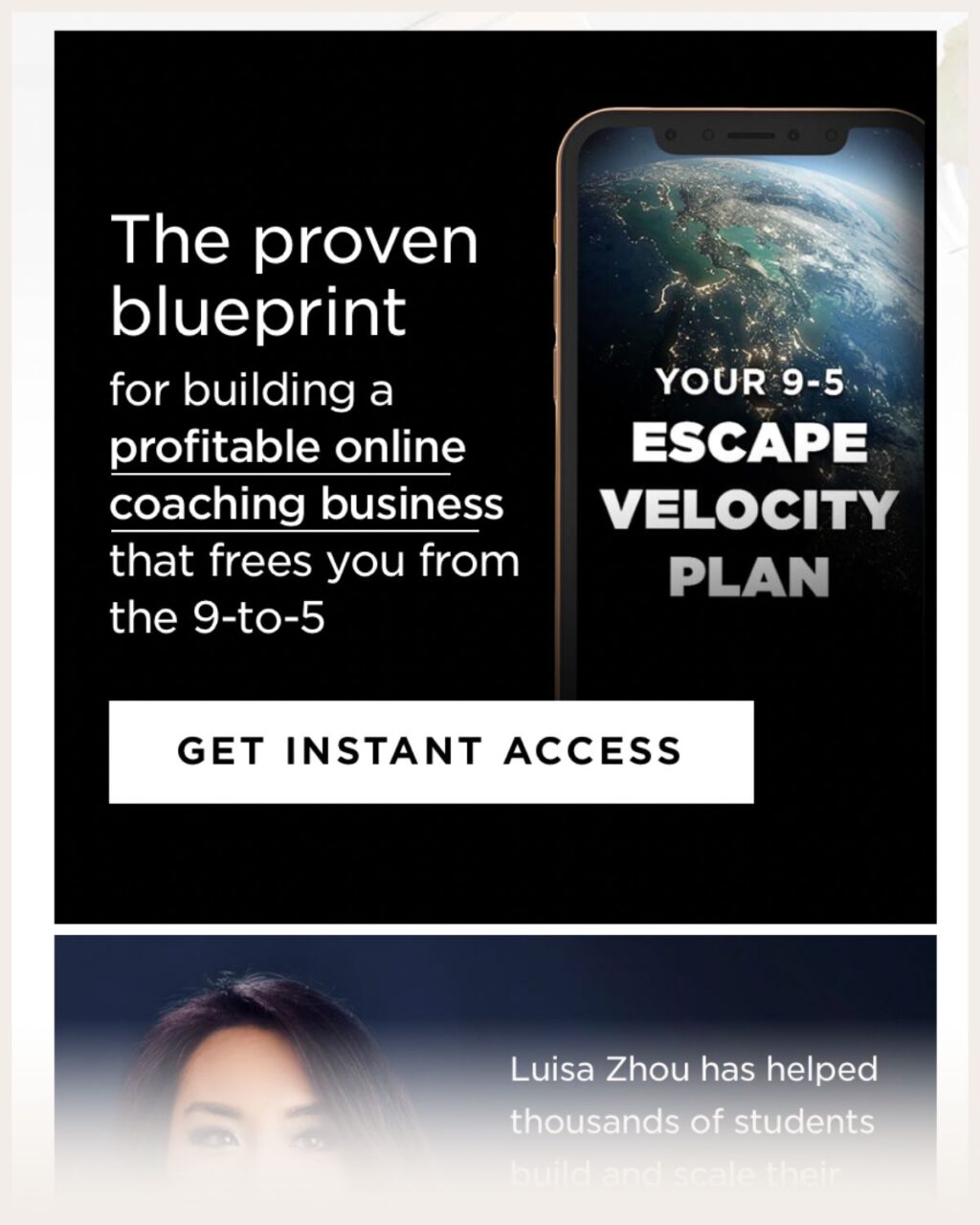
You can embed your opt-in form on your website or use a link to it on social media and other third-party platforms.
You’ll want to word your call-to-action in a way that will encourage your potential paying clients to do something specific in exchange for some benefit.
If you have a lead magnet, you can say something like “Get the FREE PDF: [Lead magnet].”
And here’s a tip: When you’re creating your opt-in, limit the number of form fields to fill out. Just ask for their first name and email.
But that’s it.
Why?
Because according to research, your conversion rate can decrease by as much as 50 percent for every field you add.
So, make it easy for people to opt-in. If you ask for too much too soon, you risk losing them.
And speaking of which, what’s a good opt-in percentage to aim for?
This can vary widely based on your audience, the traffic source, and so on, but the range is generally 1-5% for websites.
Need help creating your opt-in? You can use a tool like Popupally to simplify the process.
Autoresponder
Okay, here’s a pro tip: When someone signs up for your email list, send them a welcome email right away (I’ll give you a template to use in a bit).
In your welcome email, you also include a link to your lead magnet so that people can access it.
And here’s the good thing: With an autoresponder, you don’t have to do this manually.
All you have to do is set up the email you want sent with your email provider, and you’ll be good to go.
Your subscribers will automatically get an email (and your lead magnet) without any continual work on your part.
Wondering what email provider you should use?
Don’t sweat this step.
Ultimately, they all get the job done. But if you want a recommendation, I’d go with ActiveCampagn. (And I’ll talk more about it in a minute).
In the meantime, check out this video for a lot more detail about how to do email marketing effectively:
Engage your audience
Listen: The people who sign up for your email list WANT to hear from you regularly.
In fact, you need to engage your audience to build a relationship with them. Otherwise, you might end up with disengaged subscribers who rarely open your emails, let alone buy from you.
If you’re not sure what to talk about, ask yourself these questions:
- What are my audience’s pain points?
- What skills or experience do I have that I can share with them?
- What lessons have I learned that could help my target audience?
Your emails need to be relevant to your audience – they need to address things like what your audience is struggling with and the goals they want to achieve.
Ultimately, your emails need to add incredible value. That’s how people get invested in your business.
As a rule of thumb, I recommend sending emails 3-4 days per week. This is often enough that your audience will get a ton of valuable insights.
Get the Ultimate Guide
for building a
6-Figure Coaching Business so you can achieve more freedom!
Share stories
People love a good story. And that’s why telling stories is a powerful way to engage your audience and build relationships with them through your email campaigns – especially stories about your own journey. In fact, according to a study, storytelling can boost conversion rates by 30%.
So, share experiences that are relevant to your audience. Be relatable.
For example, let’s say you’re a health coach for busy professionals. In that case, these questions could be a good place to start:
- Why did I become a health coach?
- What was that thing that made me love helping others achieve their health goals?
- How do I help people achieve their health goals?
Chances are, your audience has a lot of health-related struggles.
And as a coach, you want to show them that not only are their goals possible, but YOU can help them get there.
Here’s an example of a story I included in one of my own emails:
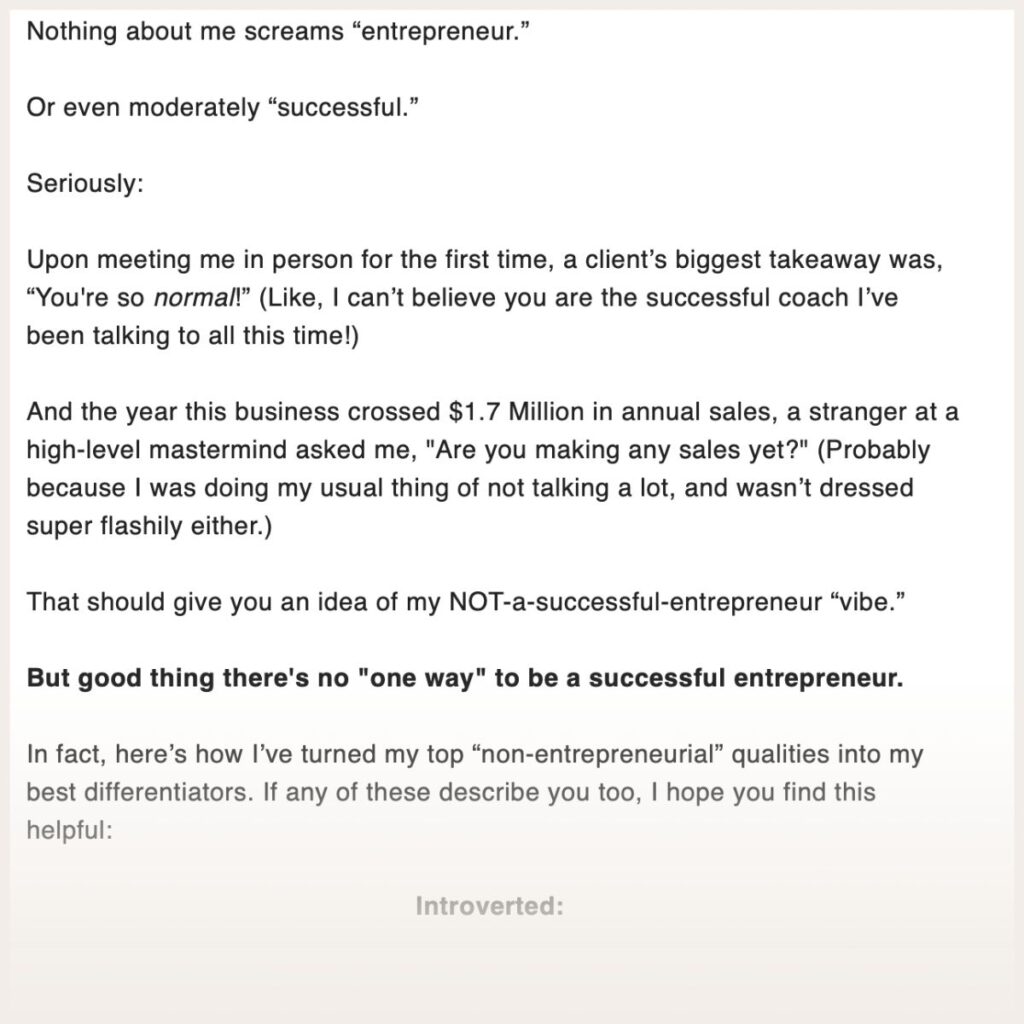
Share your other content and client stories
Emails are ideal for sharing things like blog posts and YouTube videos with your audience.
That’s because you can provide value and drive traffic to your content. Your content educates your audience on why they need your services or products and how to work with you – and by directing them to your content, you can educate them much faster.
And here’s another great thing to share: Testimonials.
Look, potential clients want to know that you can help them.
And sharing client stories of people who reached their goals with your help is incredibly powerful. They show that your coaching actually works.
After all, they are ‘social proof,’ which refers to people’s tendency to trust other people’s opinion.
Now, you do want to include substantial testimonials that show where your client was before they started working with you and where they are now. “I liked working with her” is nice, but you won’t make many sales without more specifics. Not sure how to get testimonials? I cover this topic right here.
Promote your products and services
Remember: The ultimate goal of your promotional emails is to sell your coaching programs.
Okay, but… what if you feel “icky” about selling?
Don’t worry, this happens to a lot of coaches.
And if that sounds like you, here’s something to think about: If you offer real value, you’re doing your audience a FAVOR by sending them promotional emails.
Why? Because you’re helping them solve a problem they have.
Whether you’re a business coach who helps people become entrepreneurs or a dating coach who helps guys put their best foot forward, you’re helping them get better at something they struggle with.
And that’s why you shouldn’t worry about the selling process or charging what you’re worth. Because the truth is, you have value to offer as a coach that people are ready to pay for.
With that said, you want to make your promotional emails as effective as possible. So, to do that, a few key points to include in your emails are a…
- Hook to get the reader interested
- Relevant story that ties into your service
- Call-to-action
Use a call to action (CTA)
When you’re creating emails, always think: “What do I want my audience to do?” There should always be a purpose to your content.
So, for example, you could direct them to a sales page, other content that offers the “next step” they should take to reach their goal, ask them to reply to your email, and so on.
To improve your “click-through rate” (how many people click through from your emails), you can include the CTA, such as a link, a few times in your email.
Remember to use action-driven and interesting copy that makes people curious to learn more. For example, like I do here:
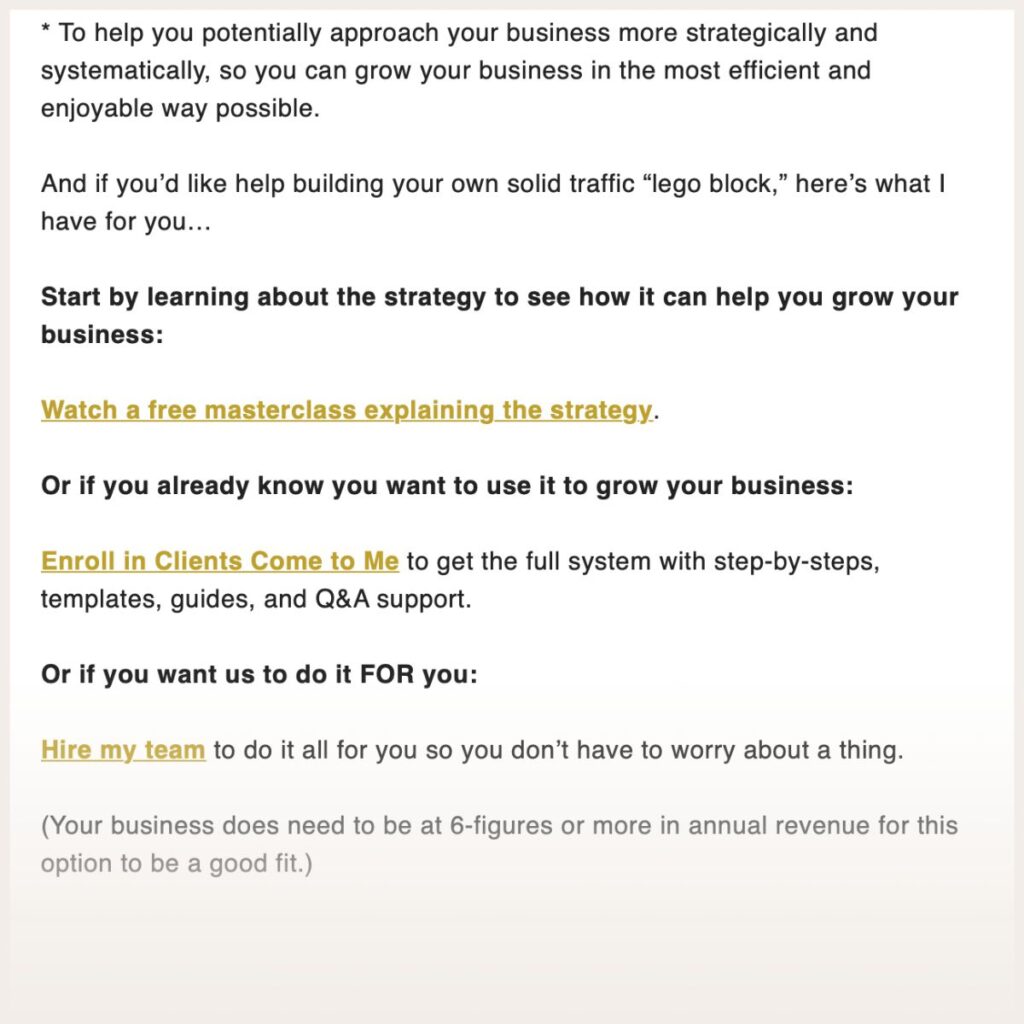
Personalize your emails
According to a study, personalizing promotional emails with a first name increases open rates by 29%.
And that makes sense: People want to feel that the email they’re getting was sent with THEM in mind specifically – even if you’re really sending the same email to tens of thousands of people.
That’s why personalizing your email marketing campaigns can help you get a huge ROI for minimal work.
All you have to do is set up personalization in whatever email marketing platform you use and in your opt-in. This is typically done with a “short code” – a short code snippet that automatically populates your emails with your subscribers’ first names.
That way, the emails you send out will automatically include each person’s first name, if available.
Here’s a helpful how-to guide for Mailchimp to get you started.
Increase open rates
Want to know what the fastest way to boost your sales using email marketing is?
Getting people to open your emails in the first place.
Let me explain…
Having thousands of people on your email list is great.
Get the Ultimate Guide
for building a
6-Figure Coaching Business so you can achieve more freedom!
But… if no one actually clicks on your emails, you won’t make conversions and sales.
So, the first step is to get people to open your emails – and then make your content so valuable and relevant to their pain points that they WANT to click-through and do whatever the email call-to-action is.
As a benchmark, the average open rate is 26.8% and the average click-through rate is 1.89%, so monitor your email marketing stats to see how you compare.
Okay, but how can you make your emails better (and ultimately increase your open rates)?
Always write with your target audience in mind. So, think about this:
- What do they need/want?
- What are their unique challenges and struggles?
- What excites them?
- What question or statement could you write in your subject line to pique their curiosity?
If you zero in on WHO you’re trying to help, starting with your subject line, it’ll be a lot easier to know what to say. Just make sure you steer clear of clickbait-y titles because people will learn not to click on your emails if you overpromise things in your headline – and don’t deliver what you promise.
The best email marketing software
Okay, as I mentioned earlier, there are a bunch of different email marketing tools you could use for your email marketing (and I’ll talk about two I like below).
Here are a few things to look for in a platform:
- Email deliverability (in other words, a good tool will help you avoid having your emails go directly to spam)
- Intuitive to set up and use
- Reliable
Mailchimp
I started off using Mailchimp when I was a newer coach, and I recommend it. It’s a beginner-friendly drag-and-drop tool and it gives you tools like analytics to track your results.
You pay according to how big your email list is and the starter plan is free. Especially with the paid plan, you get access to various features, including marketing automation features and more.
ActiveCampaign
As your email list grows, ActiveCampaign is a better option than MailChimp, but it does have a higher learning curve and it is a slightly bigger investment.
Just like Mailchimp, your plan pricing depends on how big your email list is. The features are similar to Mailchimp’s with a simple drag-and-drop email designer and automation tools.
Alright, once you’ve chosen what tool to use, here’s what a coaching email looks like:
Example coaching email
Here’s an example of an email I recently sent to my subscribers:
“Honestly, it happened by accident.
But looking back, one of the smartest things I’ve ever done for the LZ business?
Was to build it like you would build a lego set.
Long story short:
Lego block #1 was the Offer.
Years one to four were focused on really solidifying my first flagship program, Employee to Entrepreneur. That looked like taking ~1,000 students through it, and using the learnings I got from teaching and coaching a lot of people, to continually improve the course until it could stand on its own.
Because without a great offer, nothing else matters.
Lego block #2 was the Sales (System).
Years three to five were focused on figuring out a solid sales system so that sales didn’t depend on me launching, having to be on social media, or offering sales conversations. And it took that long because there are so many tangential skills you have to learn to be able to do this well — like sales, direct marketing, and understanding your audience.
Lego block #3 was the Products.
As I figured more and more things out, I created courses to teach what I’d figured out. That naturally built the product suite of courses we have today.
Lego block #4 was the Content.
Only after I’d solidified the first three blocks did I focus on content. (To be clear: I did create content the entire time, but in a very limited way.)
This goes against the advice most people give — where you’re taught to focus on content first.
But here’s why I did it this way:
Content is SUCH a big job — and expensive too. So if you don’t have either plenty of time or plenty of money to hire support, it’s really hard to create a ton of content while also trying to build your business.
Like I said, most of this happened by happy accident.
But the reason I was able to build the business this way is because of one thing I did really well from the very beginning.
And not by accident:
I’ve always prioritized traffic growth.
Because when you continually have new leads coming to your business, that actually becomes the “lego block” that the entirety of your business rests on. So you don’t have to be continually freaking out about where your next clients are coming from.
During my earlier years teaching this, I was a bit more dramatic and referred to traffic as,
“The lifeblood of your business.”
Haven’t said that in a while. But I absolutely still feel the same way.
My first few years, I used paid traffic. And it worked well enough to drive millions of dollars in sales. But we reached a point where we couldn’t scale further, and we were spending so much money that it felt like my job was to continually come up with new ad ideas. Not what I wanted to be doing.
After seriously evaluating all our options, I turned to blogging and SEO.
Loved the high-value approach that allowed me to share my expertise without having to be salesy or overshare about my private life.
Plus, it seemed a lot more reliable and scalable than any other option too.
And the rest is history.
Within two years, we’d gone from zero traffic to the blog alone driving multiple six-figures in sales. Which as you can imagine, creates a very solid “lego block” for your business and life to rest upon.
And to this day, it’s by far our #1 growth driver.
Which is what allows me to be able to focus on just the things I love — content creation, teaching, and coaching. And grow the business year after year while working less and less.
Sharing all this for a few reasons:
* So you can see one way a business you love can be built over time. But don’t take this the wrong way — because this doesn’t mean you can’t get big income wins quickly. You absolutely can! But also, good things take time.
* To emphasize the importance of building your traffic sources as early on as possible. (I wish someone had told me about SEO earlier.)
* To help you potentially approach your business more strategically and systematically, so you can grow your business in the most efficient and enjoyable way possible.
And if you’d like help building your own solid traffic “lego block,” here’s what I have for you…
Start by learning about the strategy to see how it can help you grow your business:
Watch a free masterclass explaining the strategy.
Or if you already know you want to use it to grow your business:
Enroll in Clients Come to Me to get the full system with step-by-steps, templates, guides, and Q&A support.
Or if you want us to do it FOR you:
Hire my team to do it all for you so you don’t have to worry about a thing.
(Your business does need to be at 6-figures or more in annual revenue for this option to be a good fit.)
Luisa Zhou”
Email template for coaches
There are actually a few different templates you could use for a welcome email, depending on your business, your “voice”, your coaching niche, and so on.
Get the Ultimate Guide
for building a
6-Figure Coaching Business so you can achieve more freedom!
Here’s an example:
Hi [name],
I’m so excited to have you on board!
Ready to [relevant action]? Here’s my [name of freebie] that’ll help you [client pain point].
You can download it for FREE by clicking the button below.
Thanks for joining,
[Your name]
Obviously, alter this in whatever way makes sense to you. Just try to keep it short and to the point.
Next steps
Okay, there you have it! Now you know what email marketing for coaches looks like – and how YOU can harness email to increase leads and sales.
As you can see, there are plenty of different steps to succeeding with your email marketing efforts.
Ultimately, the right email marketing strategy can help you build a successful coaching business that offers both freedom and flexibility.
But how do you build such a business?
That’s what I show in my free blueprint. Get it now to learn how to build a thriving, six-figure coaching business from scratch:
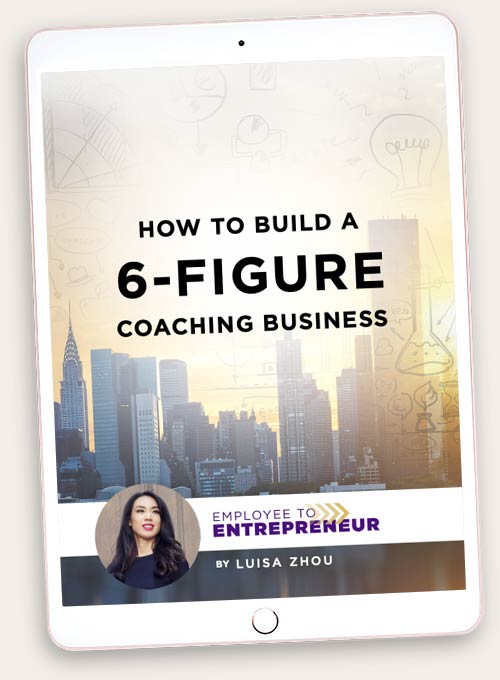
Want to Build a 6-Figure Coaching Business So You Can Achieve More Freedom?
Get Instant Access To My FREE Ultimate Guide Below!
When you sign up, you’ll also receive regular updates on building a successful online business.
Read more:
How to Build Your Business Without Social Media
